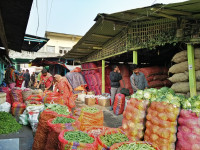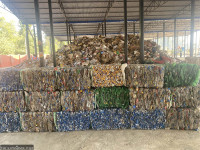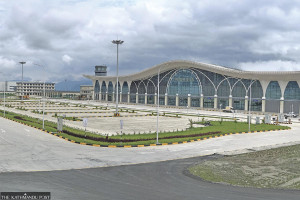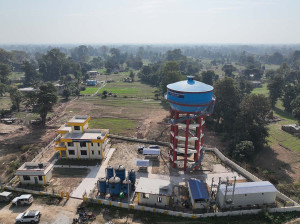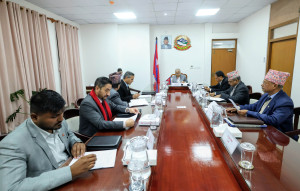Money
Private sector urges revival of export cash subsidy
FNCCI warns scrapping incentives will hit investment, jobs, and competitiveness as Nepal prepares for LDC graduation.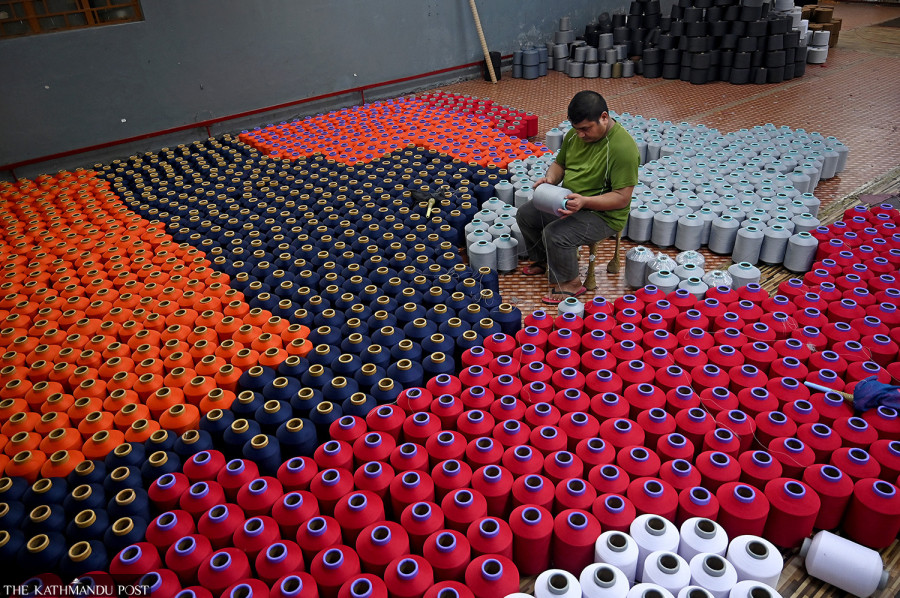
Post Report
The Federation of Nepalese Chambers of Commerce and Industry (FNCCI), Nepal’s apex private sector body, has urged the government to reinstate the recently scrapped export cash subsidy scheme. The body warns that the move will severely affect investment, exports, and employment.
On September 21, the Ministry of Industry, Commerce and Supplies asked exporters and businesses not to submit self-declaration forms for export details for the fiscal year 2024-25 to the Department of Industry. Subsequently, the department stopped accepting applications, effectively blocking exporters from claiming cash subsidies.
As per the provision, exporters could self-declare and apply for the subsidy within three months after the fiscal year’s end. Under that system, applications for the last fiscal year’s exports were due by October.
However, officials at the industry ministry insist that the decision was not abrupt.
“We are all set to graduate from the least developed country (LDC) category in November 2026 and cannot continue offering facilities such as cash subsidies for exports,” said Jitendra Basnet, joint-secretary at the ministry.
Since subsidies are based on exports of the previous fiscal year, Basnet said the provision was removed to prevent additional liabilities in the next budget cycle. The government also made no budgetary allocation for export subsidies in the current fiscal year’s budget.
“The exporters will not receive cash subsidies for goods exported in the last fiscal year,” Basnet told the Post.
However, exporters who had qualified for but not yet received the incentive in the previous fiscal years will still be paid. The ministry estimates outstanding dues of over Rs4 billion.
Basnet said the government is shifting focus from cash-based subsidies to a “production-based encouragement programme” aimed at supporting manufacturers more directly. “A notice about this has been published on the Department of Industry’s website,” he added.
The government had been providing cash incentives of 4 to 8 percent based on the export value of goods.
The export subsidy scheme was introduced in the fiscal year 2010-11 to promote Nepali products with high comparative advantage, taking effect in 2012. In the first year, 28 firms received subsidies totalling $1.6 million.
By 2016-17, the government had allocated $3 million for the incentive payments.
In October 2022, the government revised the Export Subsidy Work Procedure 2018, doubling the incentive range to 4–8 percent. Products with an annual export value exceeding Rs500 million and at least 30 percent domestic value addition qualified for the highest 8 percent subsidy.
Under the scheme, goods such as clinker, cement, steel, footwear, processed water, and services in information technology and business process outsourcing were entitled to up to 8 percent in cash incentives.
Products like textiles, readymade garments, carpets, Chyangra pashmina, jute goods, jewellery, semi-processed leather, medicines, felt and fibre products, and handicrafts were granted 4 percent. Agricultural and forest-based goods—such as processed tea, coffee, wooden crafts, handmade paper, herbs and essential oils, mineral water, and stone jewellery—qualified for a 5 percent subsidy.
Goods like turmeric, vegetables, flowers, processed honey, large cardamom, and ginger exported to third countries also received a 5 percent export incentive.
Exporters have long argued that the government’s 4-8 percent subsidy was insufficient to make Nepali products competitive abroad, and have been demanding at least a 10 percent incentive.
They also want the benefits extended to cottage and small industries that supply raw or semi-finished goods to large exporters.
The subsidy system was administered through a multi-step process: the finance ministry allocated the budget to the industry department, which then coordinated with Nepal Rastra Bank to verify export documents before releasing payments.
The ministry has now formally revoked the Export Subsidy Work Procedure 2018, saying it will explore alternative mechanisms to support exporters.
Insiders said the subsidy budget was consistently inadequate compared to the volume of claims.
Nepal’s total exports surged 81.8 percent in the last fiscal year to Rs277 billion. However, the rise was largely driven by the re-export of edible oils—soybean, sunflower, and palm oil—that Nepal does not produce domestically. Edible oil exports alone jumped more than fifteenfold to Rs121.53 billion, accounting for 43.86 percent of total exports.
In contrast, exports of domestic products—those produced by Nepali farmers and manufacturers—rose by just 6.62 percent, highlighting the country’s overreliance on re-exports under the duty-free access granted to least developed countries.
Exporters and industry leaders warn that removing cash subsidies at a time when domestic manufacturing is struggling could further erode Nepal’s competitiveness in global markets.
Economists say that while Nepal’s LDC graduation limits its ability to provide such direct incentives under international trade rules, the government still has policy room to encourage exports through tax rebates, infrastructure support, and technology incentives.
For now, the business community remains sceptical. The FNCCI said in its statement that removing subsidies without a clear replacement framework would “send the wrong signal to investors at a time when the economy is already under stress.”
“The government must immediately announce a transition plan to ensure exporters are not left stranded between two policy regimes,” the federation said.




 19.12°C Kathmandu
19.12°C Kathmandu